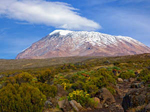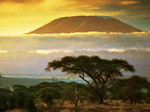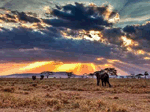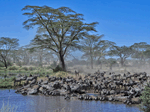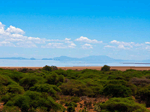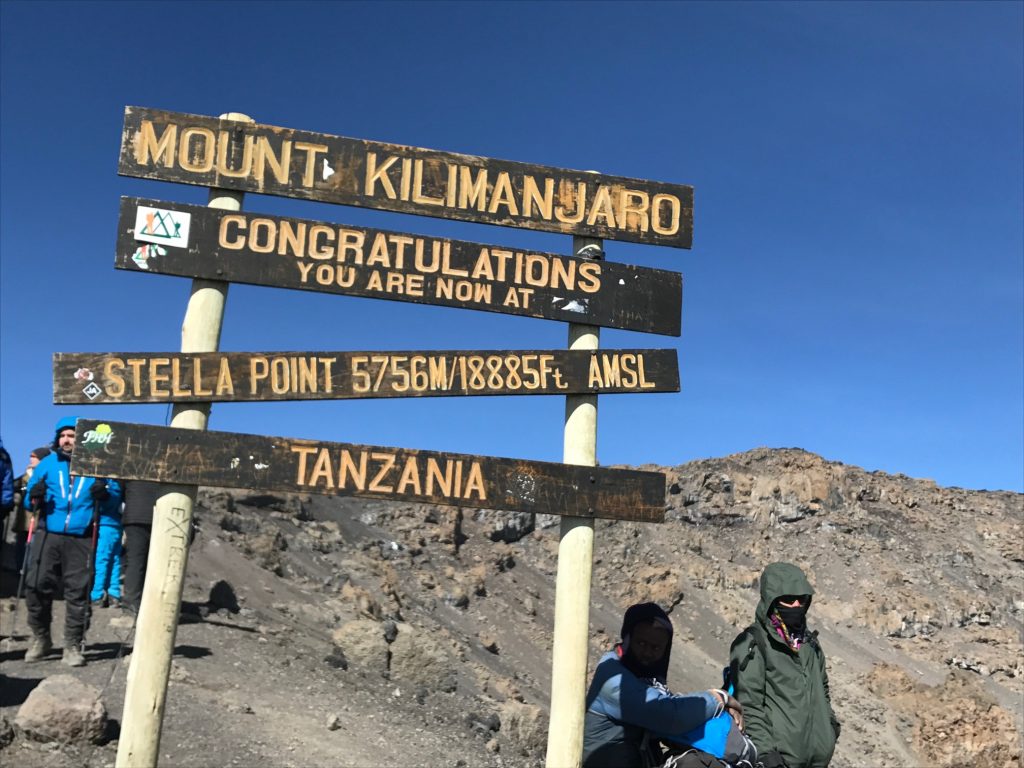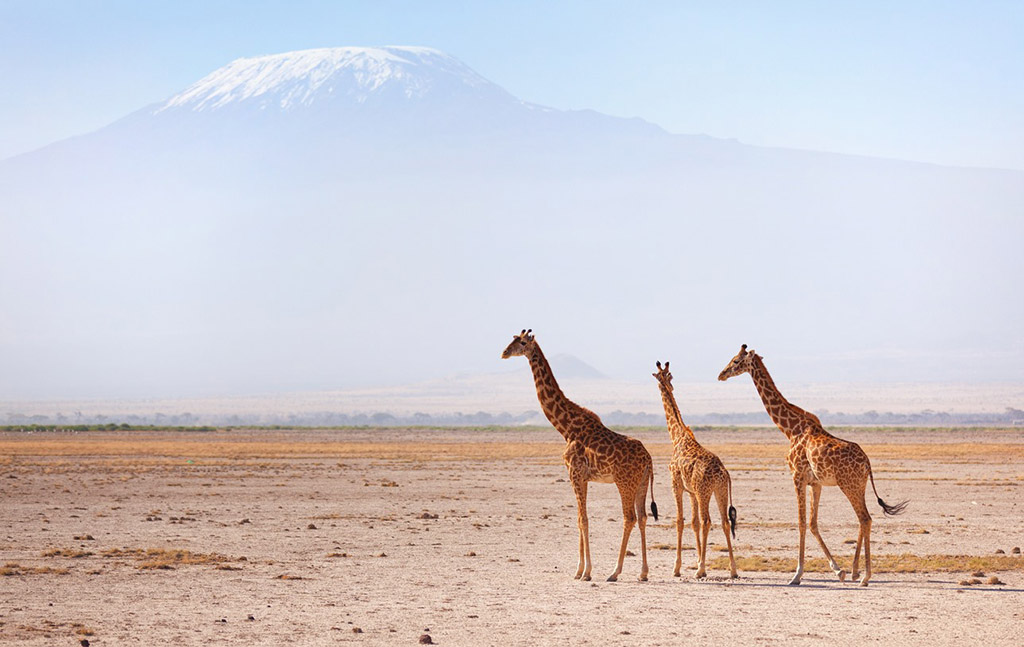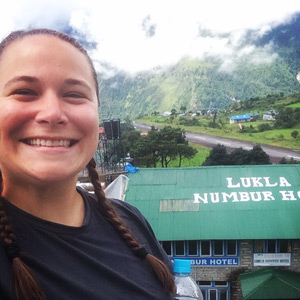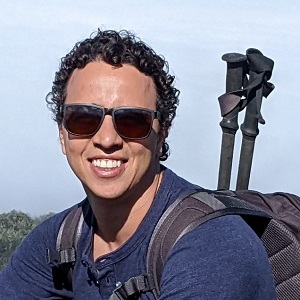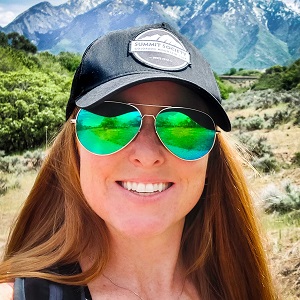
Summiting Mt. Kilimanjaro is a feat worthy of any trekker’s bucket list. During this incredible trek, you’ll walk through rainforests, experience breathtaking sunrises, walk along glaciers, and—of course—summit one of the most famous peaks in the world.
However, with 72-78 km (45-48 miles) of round-trip trekking and 3,944-4066 km (12,940-13,340 ft) of elevation gain, the trail to the top of the highest mountain in Africa is not for the faint of heart.
We believe that anyone who is physically healthy can successfully summit Mt. Kilimanjaro with the right preparation, acclimatization, and training! In this article, we discuss 15 of our top tips for summiting Kilimanjaro successfully.
Tips for Summiting Mount Kilimanjaro
Only about 60-65% of people successfully reach the summit of Kilimanjaro. The main reasons people don’t make it to the top are poor acclimatization and failure to train.
However, with some preparation and a little consideration, you can increase your chances of summiting Kilimanjaro! Below are some of our top tips for increasing your chance for success in summiting Mt. Kilimanjaro.
Tip 1. Stick to Longer Routes
One of the main reasons people don’t make it to the top of Kilimanjaro is due to acclimatization problems. Not reserving enough time to adjust to the higher altitude can cause altitude sickness.
Success rates for 7- or 8-day routes increases your chances of successfully summiting Kilimanjaro. This is because it allows less elevation on your trekking days, as well as providing “climb high” and “sleep low” schedules where you climb higher during the day but descend by nightfall. This helps your body better transition to the altitude.
Trekking Kilimanjaro on the Machame,Lemosho, or Marangu routesare good options.

Glaciers next to Uhuru Peak – a sight worth climbing for!
Tip 2: Train Beforehand
It has been said that the most successful summit comes from how you train beforehand.
The best kind of training for successfully summiting Kilimanjaro is hiking. Load up your backpack with weight comparable to what you will carry on the hike, and practice hiking uphill for at least two hours straight, then doing the same for downhill—preferably on uneven terrain such as a mountain or forest trail. If you’re able to hike in high altitudes before your Kilimanjaro ascent, this can be helpful as well.
At a minimum, you should be able to walk for a long period of time—and at a brisk pace—before signing up for a trip. Good cardio fitness beforehand through running or swimming would be a bonus. The more you train before the trek, the more likely you are to summit Kilimanjaro.
Tip 3: Pack Plenty of Layers
As you gain elevation, it’s going to become increasingly cold on the mountain. This is especially true on summit day. Because of the temperature fluctuations and unpredictable, it’s important to wear layers that you can easily modify at the beginning of each day and during the hike to meet your temperature needs.
A good tip is to a base layer, insulation layer, and shell layer. We recommend wearing moisture-wicking base layer for your torso and legs (something that isn’t cotton is best as cotton absorbs moisture), a heavy fleece or down jacket and trekking pants as a middle insulation layer, and a Gortex or other breathable waterproof jacket with a hood that will protect you from the wind and keep you dry.

Making it to the top! It’s a bit of a fight to get your photo but totally worth the wait (and the climb!).
Tip 4: Prepare for Outdoor Living
Most routes to the summit of Kilimanjaro require multiple days of tent camping (except the Marangu route which has a hut network). This means you should be comfortable sleeping in tents, going multiple days without a shower (though you can use wipes and a warm bowl of water to freshen up at the end of each day), and going to the toilet outdoors.
If you’ve never been camping before or haven’t been camping for quite some time, take a couple of weekend trips before your trip. This can help set realistic expectations for what to expect between days of trekking.
Having an idea of what you’re getting yourself into ahead of time can help you mentally prepare for the trail. It can also help you figure out what you need (such as earplugs or eye masks) to sleep outdoors. This is why it’s an important tip for summiting Kilimanjaro.
Tip 5: Wear Sun Protection
When you are climbing Kilimanjaro, you are not only close to the equator, but you are also gaining significant elevation. This means you are closer to the sun and should be more conscientious about sun protection. Painful sunburns can dampen your trek and are easily preventable. Bring a wide-brimmed hat and a neck cover to protect your face and neck, wear plenty of sunscreen, and don’t forget sunglasses—especially if there’s snow on the mountain.
Tip 6: Bring Diamox
We talk to a lot of people who don’t like to take medication or would prefer not to use a medical remedy while climbing Kilimanjaro, but many people who take Diamox to prevent altitude sickness are glad they did. Altitude sickness is one of the biggest and fastest reasons people fail to reach the summit of Mt. Kilimanjaro. Diamox can help stave off altitude sickness, helping prevent or lessen many of the effects and symptoms of the condition.
If you’re worried about whether you will be able to summit Kilimanjaro, a good tip is to take Diamox to improve your likelihood of reaching the summit. Talk to your doctor before the trek to discuss whether Diamox is a safe option for you.
Almost everyone will suffer some effects of altitude by the time they summit Kilimanjaro, but these effects will hopefully be minor and will subside as you begin your rapid descent. It should be emphasized, however, that if you feel the signs of altitude sickness early on during the trek and the symptoms do not improve, the only solution is to notify your guides and get down as soon as possible. Altitude sickness can be fatal, and symptoms should never be ignored or concealed from your guides.

Sunrise while climbing to Stella Point
Tip 7: Drink Plenty of Water
Staying hydrated is critical for summiting Mount Kilimanjaro, not only for staving off altitude sickness, but also for making sure your body can handle the physical strain of climbing the mountain.
People become dehydrated more quickly at higher levels of altitude, which can increase the chance risk of headaches, altitude sickness, and fatigue. It’s wise to carry at least 3 liters of water while you hike and to drink one liter at the beginning and end of each day of hiking.
Many water bladders and straws can freeze the closer you get to the summit, so it’s important to have one or 2 liters of backup water in insulated bottles.
Tip 8: Bring a Playlist
Many people start to tire of the hike to the summit of Mount Kilimanjaro after several hours (or days) of trekking. We’ve had more than one guest mention that it helped them to have a playlist of their favorite music or podcasts to provide some extra entertainment along the hike.
Having your favorite playlist can help you push through weariness during particularly difficult ascents and can refocus your motivation when you’re feeling tired.
Tip 9: Bring a Poncho & Gaiters
The weather on Kilimanjaro can be unpredictable. You’ll likely experience blue skies, sudden rainstorms, and a good dose of wind—sometimes all within 30 minutes. Having a poncho and gaiters—and having them handy—can protect you from the elements when the weather shifts.
Tip 10: Pack Enough Snacks
Many people find that they are less hungry at high altitude. However, it’s important to remember that you are burning a lot of calories while trekking Kilimanjaro, and your body needs replenishment to give you the best success of summiting. Do your best to eat your meals each morning, afternoon, and night (they will be delicious and plentiful!), but also prepare by packing plenty of snacks. You’ll want these extra snacks between meals as you trek, as well as to supplement your meals if you’re finding you’re having trouble eating the food.
It’s always a good idea to pack in a few extra treats in there as well. You may not always be in the mood for a healthy meal or a protein bar, but if you can never say no to peanut m&m’s or Cheez-its then bring some! This will ensure there is something in your pack that you will eat even when nothing else sounds good—and is a yummy summit treat otherwise!

Camp preparations in Barafu Camp before our final sleep before the summit climb. It’s important to try to get as much sleep as you can before waking up at 11pm to start the climb.
Tip 11: Bring Earplugs
It’s important to be well-rested each day as you hike toward the summit of Kilimanjaro. For the best chance of making it to the top, you’ll want to make sure you get plenty of rest each night. This can be a difficult feat as, on most of the Kilimanjaro routes, you’ll be camping in tents. Bringing earplugs can help block out the sound so you can get a better night’s rest. For an extra tip, bring an eye mask as well!
Tip 12: Bring the Right Pack
There are a few things to consider when you’re choosing which pack to bring for Mt. Kilimanjaro that will make a difference in your comfort as you trek.
- Get the right size.You may be tempted to bring a large backpacking backpack, but you likely will not need it as you’re hiking up with a group of porters who will carry many of the larger items. Instead, pick a daypack that can carry the items you’ll need on the trail such as water, snacks, and extra layers, but that isn’t too bulky. This bag will begin to feel heavier and heavier as your day on the trail wears on.
- Train with your bag.It’s important to train with your bag not only to get used to hiking with a comparable amount of weight. Make sure before you leave for your trek that you’ve done several hikes wearing your backpack with comparable weight to what you’ll experience as you hike Mt. Kilimanjaro. Try to find trails with elevation gain and uneven terrain for a better training experience.
- Ensure the right fit. Training ahead of time with your backpack can also help ensure your backpack is comfortable. This way, if the bag chafes, rubs, or sits at uncomfortable pressure points, you have time to find a different solution before your trek.

A successful summit includes the long way down. Have your balaclava ready to block the wind and all that dust kicking up as people slide down the mountain. I might bring a few more energy gels for this part as well.
Tip 13: Break in Your Shoes Beforehand
Blisters can be a serious problem as you attempt to summit Mt. Kilimanjaro. Between long days of walking, excessive dust, and unpredictable rainstorms, it’s easy for chafing to start to create blisters. While you’ll also want to be sure to bring blister prevention supplies such as moleskin, duct tape, and/or anti-chafing balm, you’ll also definitely want to break in your hiking shoes ahead of time.
Make sure to buy a pair of hiking shoes that fit—many people make the mistake of buying hiking shoes that are too small and don’t have room for layered socks or feet warmers. Make sure when you break them in that there is no rubbing, chafing, or uncomfortable pressure points.
We recommend taking your hiking shoes on at least 4-5 moderate-length hikes before your trek.
Tip 14: Trek Slow and Steady
When you’re attempting to summit Mt. Kilimanjaro, remember that it’s a marathon—not a race. Acclimatization to the lower levels of oxygen as you ascend takes time and pushing this time too far and too fast can be one of the main causes of altitude sickness.
You’ll hear guides often say, “Pole, pole,” which means slowly, gently, or “take it easy.” Going slow and steady can be the difference between successfully making it to the summit of Mt. Kilimanjaro and having to turn back early. During the trek, you should be trekking slowly enough to be able to comfortably carry on a conversation.
On summit night, the ascent is steep, and you will likely be told to take a “rest step” between each step to help conserve energy. This is the method mountaineers use to climb challenging peaks such as Everest. To rest step forward on a climb, step forward but don’t put your weight on your forward foot. Instead, lock your back knee and relax the muscle in your front foot as it comes to rest on the ground so there’s no weight on it. Rest there as long as you need to. Then shift your weight to the front foot, step forward with the other, and lock the rear knee again—repeating the process.

Finally back to Barafu Camp after almost 12 hours!!
Tip 15: Keep a Positive Attitude
Your attitude will also have a huge effect on whether or not you reach the summit of Kilimanjaro. Increase the odds of your success (and the success of those around you) by having a positive attitude. Remember why you chose to do the hike (and remember it was a choice that you made; you’re not being forced to complete it), and revel in knowing that you are achieving something incredible.
Bonus Tip: Choose a Good Trekking Company
Aside from the 15 tips for summiting Mt. Kilimanjaro listed above, a final bonus tip is to make sure you have a great trekking company. While you have control over the snacks you bring, how often you drink water, and having a positive attitude, your trekking company has a huge impact on the amenities, comfort, attitude, and safety along the way.
What’s it Like to Trek with Trekking Hero?
Trekking Hero is rated #2 in Kilimanjaro on Trip Advisor. Read over 200 great Trekking Hero Reviews here!
Would you like a free, no-obligation trip quote? Reach out! We’re happy to send you more information about our packages and pricing.
*This blog was originally published in November 2017 and was updated in February 2020.
